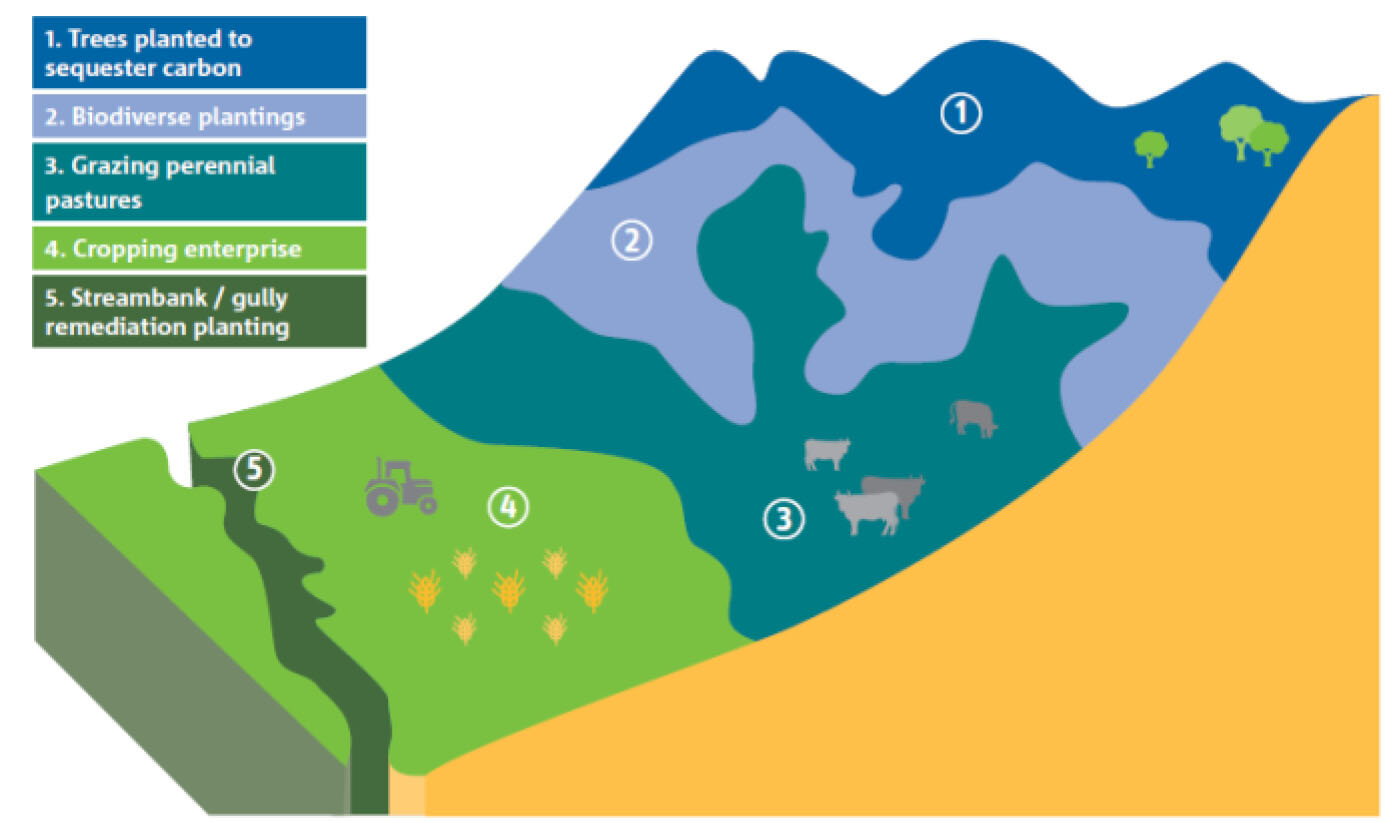Agriculture – Mosaic Farming
The Grampians Region covers 48,627 square kilometres, almost 78% of the land mass is used for agriculture and forestry, and combined they are estimated to contribute 46% of the region’s emissions. Farms and the wider agricultural industry are a vital part of the fabric of the Grampians, its largest environmental stewards, and a key driver of the economy. There is no question that farming enterprises need to be profitable and sustainable in order to sustain the Region’s livelihood.
Not only is agriculture a key industry for the Region, but it is of great significance for the campaign to reach Net Zero Emissions. Whilst reducing emissions is a preferred model, using the regions natural capital to capture emissions is an important environmental and economic opportunity for the region, and a key element to achieving net zero emissions.
By capitalising on the regions existing agricultural research strengths and its relative advantage in rainfall and soil types, the region has the opportunity to lead in the development of economically viable, environmentally sustainable agricultural practices. The industry has already undergone significant practice change that has improved productivity and lead to improved soil condition.
Mosaic farming is a methodology that maximises the natural capital of an areas land use. Using scientific analysis of the landscape, to maximise it productivity and minimise environmental impact (refer figure 1). Whilst there have been several examples of successful small-scale trials, there is not yet a robust business model for the more complex ‘mixed farming’ businesses common to the Grampians region. For wide scale adoption of practices, leading to emissions reduction to be achievable there must be a clear, economically positive and low risk proposition for farmers.
A large-scale mosaic farming trial, undertaken in collaboration with farmers, researchers and government has the potential to unlock economic gains through increases and diversity in income as well as wide scale environmental benefit through increased biodiversity and emissions reduction.
Figure 66: A mosaic of land use balancing agricultural production with carbon sinks and eco-system health. Source: CSIRO 2019

